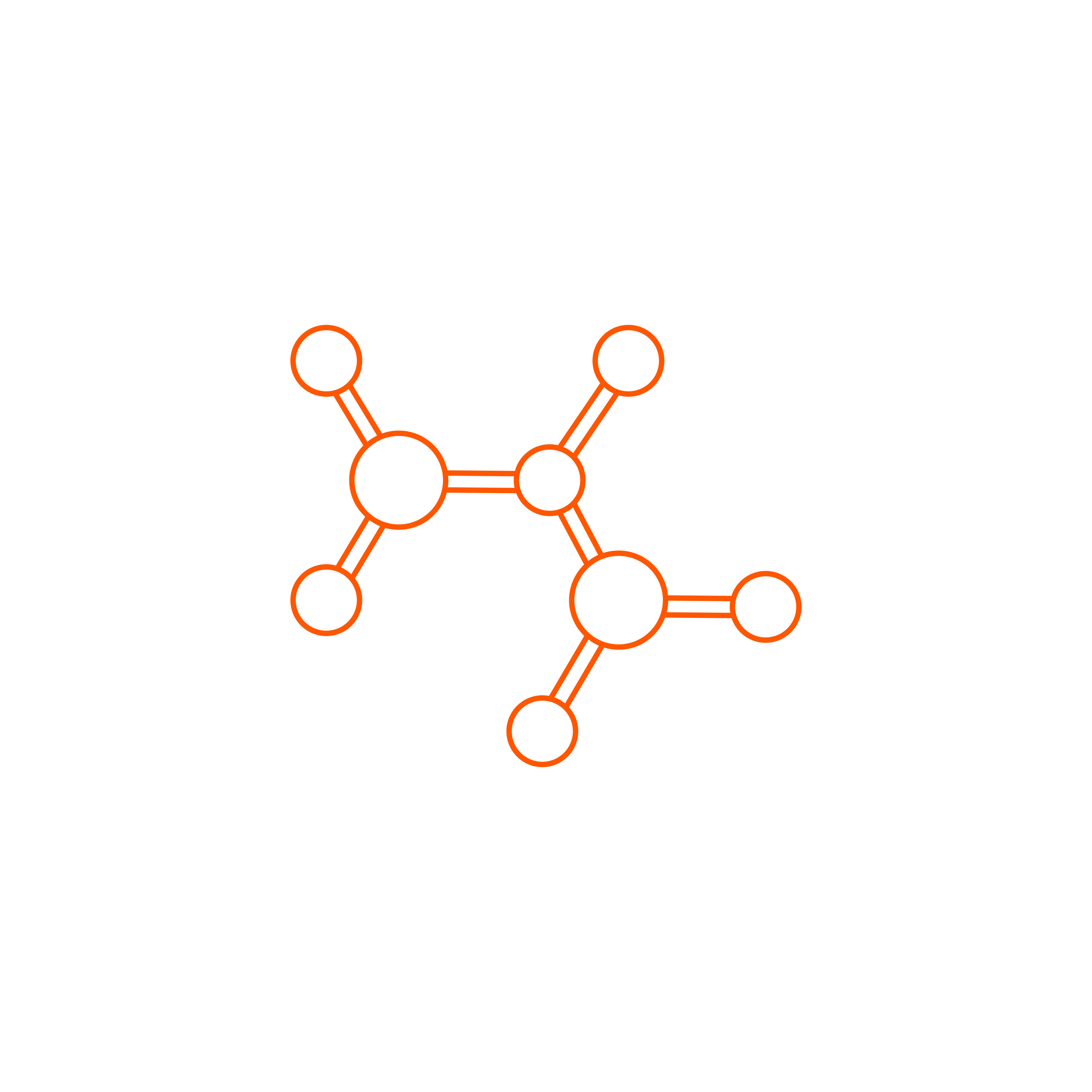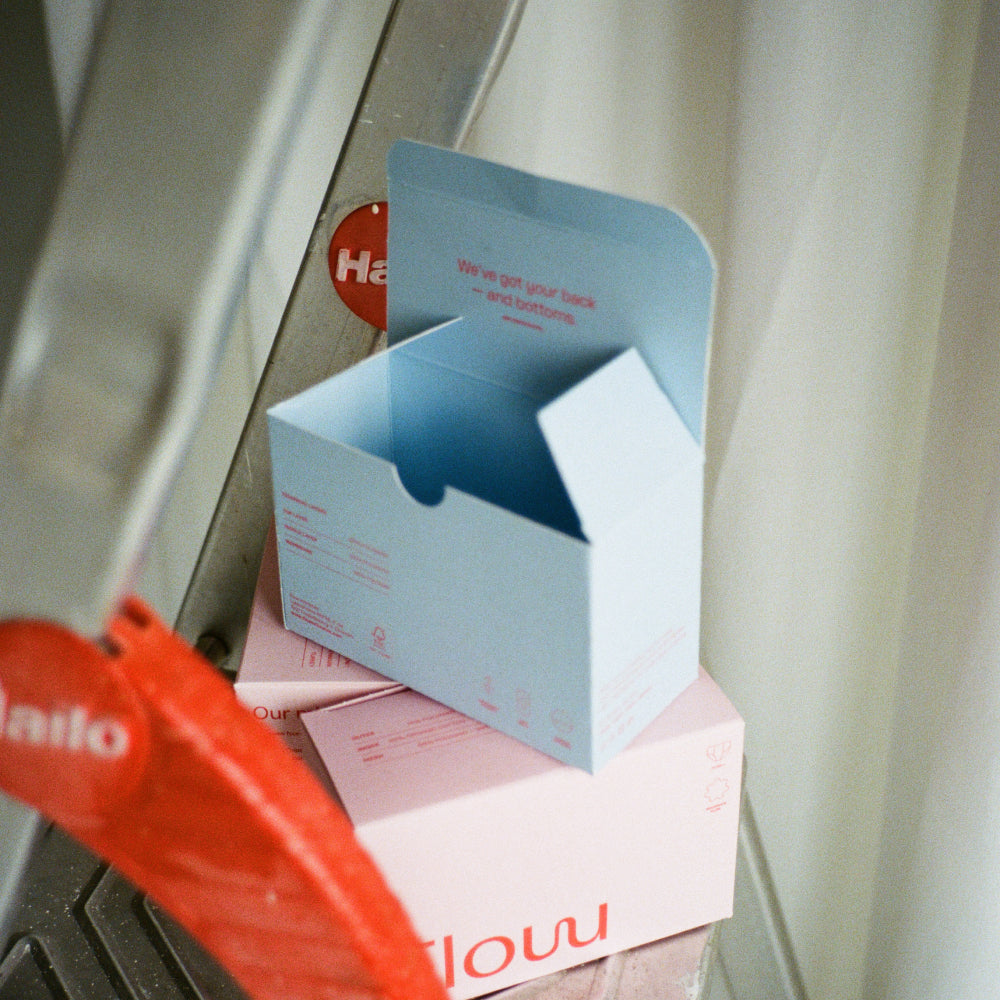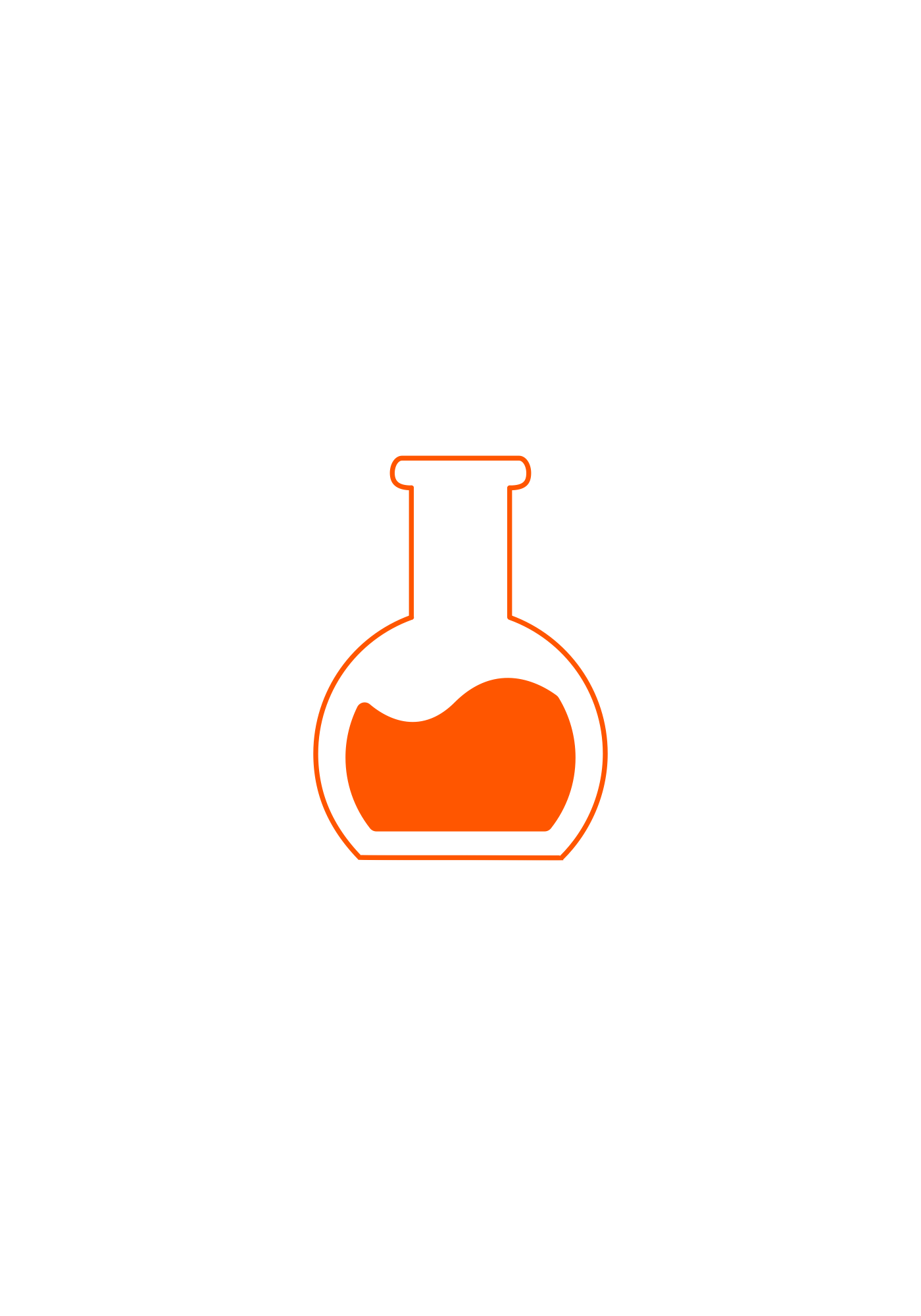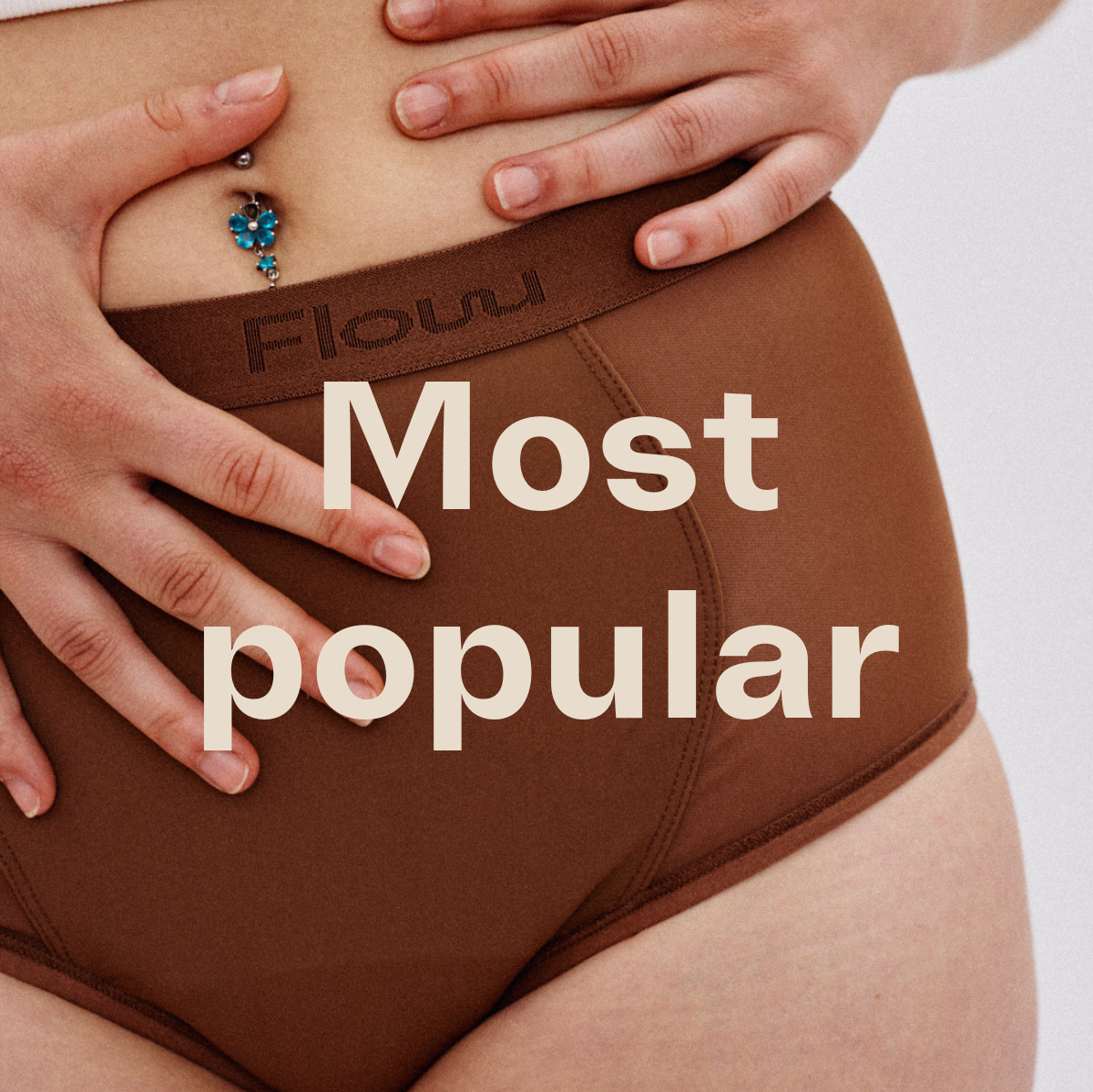Learn more about our panties
Flow's menstrual panties are made with an innovative built-in pad, consisting of 3 technical layers.
But technology cannot stand alone - we would not compromise on comfort.
That is why we have tested and developed continuously, in order to offer you the ultimate protection, without having to compromise on aesthetics or comfort.
The absorbency of our menstrual panties
What can I expect from the absorbency?
At Flow, we are not really into to putting people in boxes - the designations in the industry that define when something is a light or strong flow are super relative and individual. Your absorbency needs can not fairly be determined only based on the amount of blood you bleed, - it also matters what texture and speed at which you bleed. And this can vary from day to day in your cycle.
Therefor, the drops on our packaging are more an indication of the absorption level, and for which amount they are tested in regular use. You should never bad, if you experience needing one type of absorbency on your day 2-3, and another of day 5. Likee with pads and tampons, it is common to need to change more often, on heavy days.
Here you will find an overview of the amount they are expected to hold.
We are confident to say that; they absorb more than most people think!
Light flow in our terms corresponds to up to 1 normal tampon, and would also be useful for heavy discharge or light incontinence.
Moderate flow in our terms corresponds to 1-2 normal tampons, approximately 5-10 mL of blood
Moderate+ flow in our terms corresponds to 2-3 tampons, and can be used advantageously at night for extra security.
"Do your panties contain PFAS or biocides?"
We take responsibility
There is an increasing focus on persistent chemicals and other harmful substances in our clothing. Fortunately!
Read below for more information about harmful chemicals and why we don't use them.

We test systematically
Your menstrual panties from Flow work due to fabric weavings, not because of any chemicals.
All the fabrics we use are Oeko-Tex certified.
We don't use nano-silver or PFAS in our panties either. We systematically test all our panties for PFAS through a third party in Germany every other year.
In our latest test in 2023, we received the annotation 'No detectable levels' of PFAS and other biocides. This means there were no measurable amounts in the panties.
However, to claim 'Free of PFAS' is misleading. The unsettling aspect of PFAS is that these substances are everywhere in our environment. So, even though we haven't intentionally introduced PFAS chemicals into our panties, they may have come into contact with something that has PFAS on it."

What is the problem with PFAS?
PFAS is a group of so-called 'forever chemicals' that take a very long time to break down in nature. It is a chemical group that flourished in the 1950s and 1960s and has been used and appreciated for its effectiveness. It has been used in everything from kitchen pans to children's footwear. That way, you wouldn't get wet feet!
Some manufacturers have used PFAS in their menstrual panties to achieve a water-repellent effect.
However, forever chemicals are characterized by being environmentally harmful and harmful to humans, where they can accumulate in our blood, liver, and kidneys, increasing the risk of cancer and other health issues

What is the problem with silver?
Silver is used as an antimicrobial agent and is used in some menstrual panties to reduce odors.
However, scientists have increasingly warned about the potential health effects of using silver for this purpose.
The FDA has confirmed that nanosilver can help kill the healthy bacteria in the vagina (lactobacillus) that help fight infections. This can lead to a better environment for the harmful bacteria, which can potentially lead to a number of infections, abdominal diseases and pregnancy complications.
Do you want to know more?
Most frequently asked questions about blood and flow
Lumps in your menstrual blood are completely normal! During menstruation, both blood and tissue are released from the uterus. It is the combination of blood and tissue that can result in these clumps during menstruation. You may experience clumps in your period when the blood has a chance to clot before being discharged from the body.
Remember: If you have just given birth, be aware of clots – clotted blood that is discharged from the uterus. Reach out to your midwife if you need guidance.
We can understand why you're asking! How long you can keep your panties on during your period depends, just like with pads and tampons, on several factors such as the intensity, volume, and speed of your bleeding. However, many of our customers report that they have been able to use their panties throughout a regular workday and only needed to change them after 8-10 hours.
But it is also entirely normal on heavier bleeding days to feel the need to change them more frequently.
We recommend that you always have a wet bag with a few extra pairs of panties if you are on the go for an extended period.
It will be entirely individual when you feel it's time to change your panties. However, you will quickly get a sense of it. Typically, you may feel that the panties have a bit more weight. Perhaps they have become wet on the top layer because they can't absorb more, or you may notice that the blood has started to seep out to the sides at the edge of the panties.
These can be signs that it's time to change your panties.
If you're at home, you rinse them in cold water until the water runs clear. If you need to wash them right away, you put them in the machine at 40 degrees with similar colors. If not, you hang them to air dry inside out until you need to wash them.
If you're on the go, you put them in your wet bag. As soon as you're home, you rinse them in cold water and follow the washing procedure. Think of it like workout clothes; the longer they stay enclosed, the more they might need to air out.

